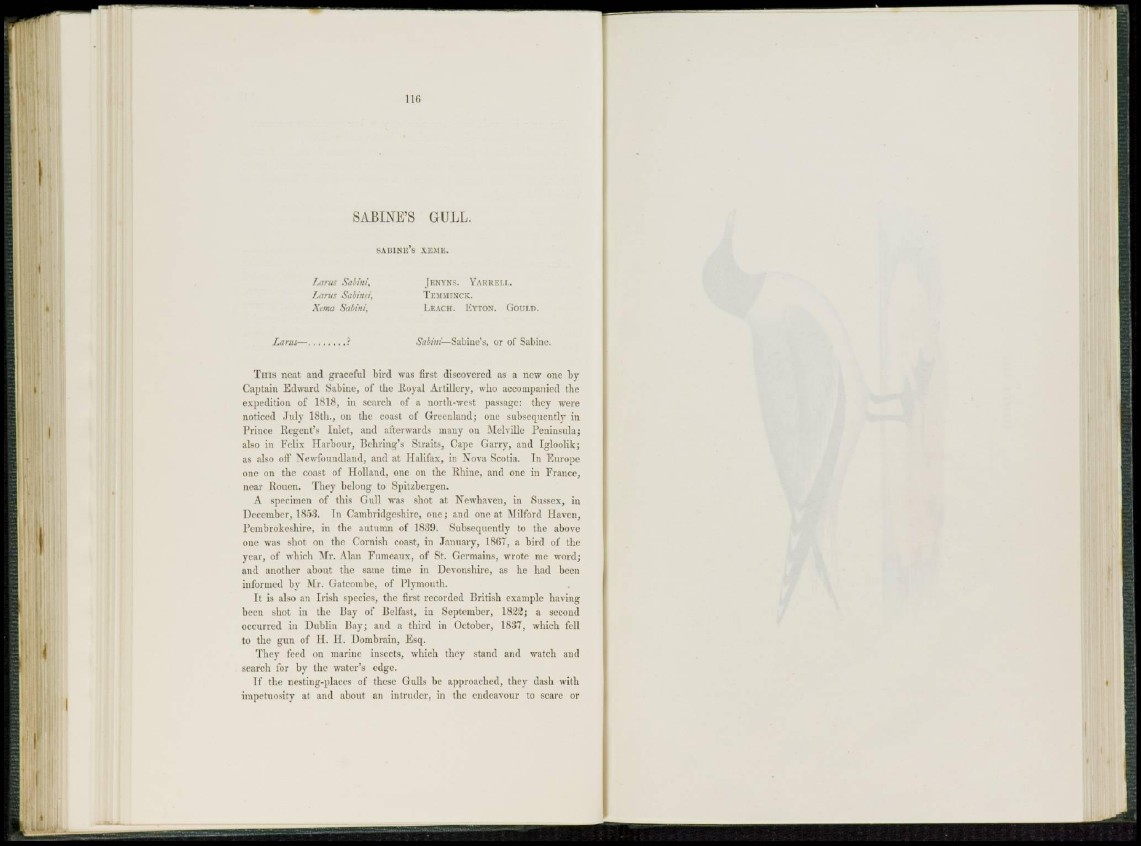
S A B I N E ' S G U L L.
SABINE'S XEME.
Lams Sabini,
Larus Sabina',
Xcma Sabini,
JENYNS. YARRELL.
TEMMINCK.
LEACH. EYTON. GOULD.
Larus— Sabini—Sabine's, or of Sabine.
T H I S neat and graceful bird was first discovered as a new one by
Captain Edward Sabine, of the Royal Artillery, who accompanied the
expedition of 1818, in search of a north-west passage: they were
noticed July 18th., on the coast of Greenland; one subsequently in
Prince Regent's Inlet, and afterwards many on Melville Peninsula;
also in Felix Harbour, Bchring's Straits, Cape Garry, and Igloolik;
as also off Newfoundland, and at Halifax, in Nova Scotia. In Europe
one on the coast of Holland, one on the Rhine, and one in France,
near Rouen. They belong to Spitsbergen.
A specimen of this Gull was shot at Nowhaven, in Sussex, in
December, 1853. In Cambridgeshire, one; and one at Milfbrd Haven,
Pembrokeshire, in the autumn of 1839. Subsequently to the above
one was shot on the Cornish coast, in January, 18fi7, a bird of the
year, of which Mr. Alan Fumeaux, of St. Gcrmains, wrote me word;
and another about the same time in Devonshire, as he had been
informed by Air. Gatcnmbe, of Plymouth.
I t is also an Irish species, the first recorded British example having
been shot in the Bay of Belfast, in September, 1822; a second
occurred in Dublin Bay; and a third in October, 1837, which fell
to the gun of II. H. Dombrain, Esq.
They feed on marine insects, which they stand and watch and
search for by the water's edge.
If the nesting-places of these Gulls be approached, they dash with
impetuosity at and about an intruder, in the endeavour to scare or